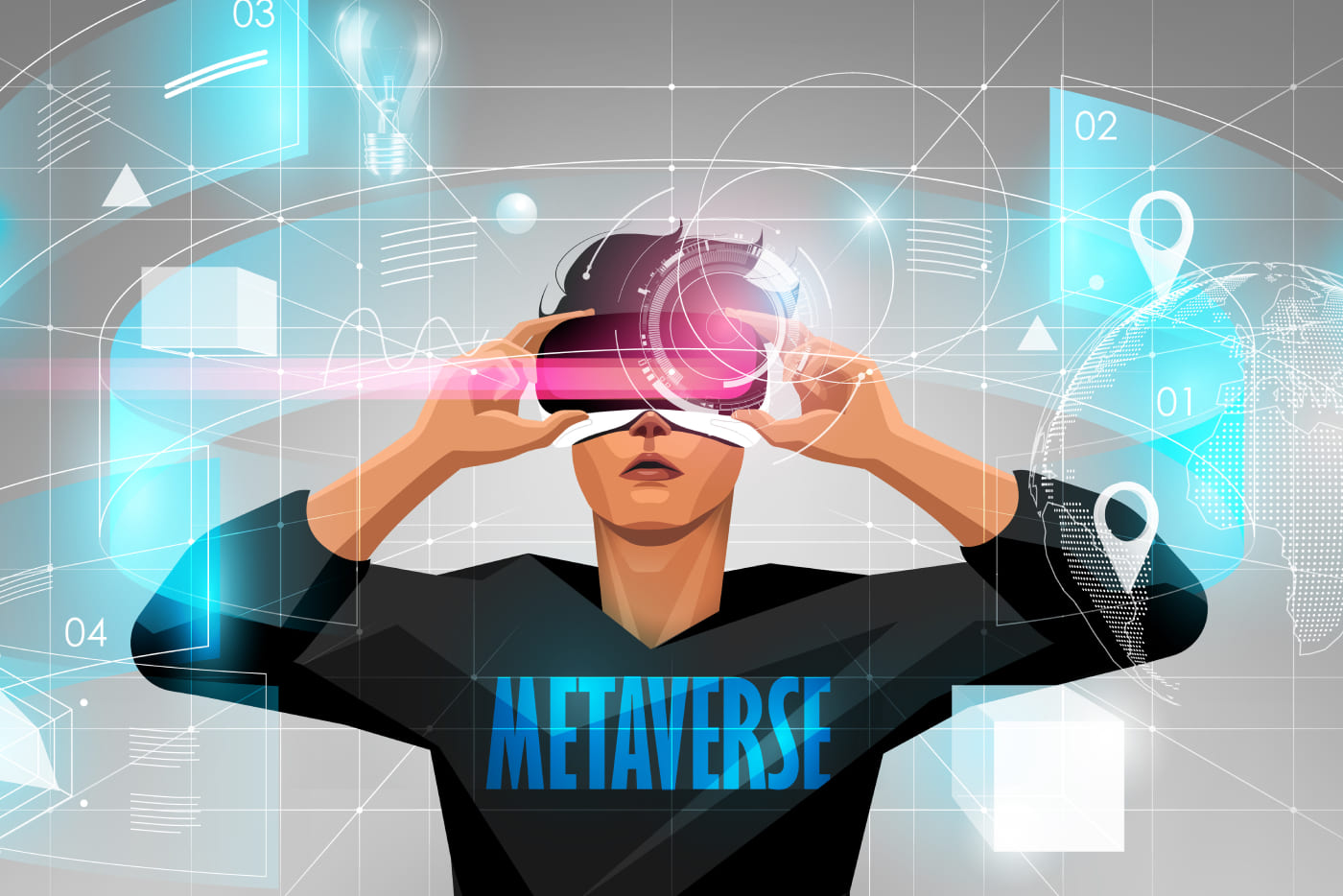How Luxury Brands Are Making Money In The Metaverse
31 January 2022
Would you pay hundreds of dollars for a purse, coat, or shirt that you never get to wear in the real world?
Gamers already have a long history of using clothes and accessories to establish their virtual identities, and there’s every indication that metaverse users will do the same. Executives of luxury brands are taking the trend seriously and moving quickly to capitalize on the opportunity to sell virtual versions of their products to people in the metaverse.

In the new frontier of the metaverse – a persistent, shared virtual world that users can access through different devices and platforms – avatars are everything. And that means some users will pay big bucks to outfit their avatar with luxury goods.
Meta CEO Mark Zuckerberg expects this niche to be big in the metaverse. Zuckerberg says, “Avatars will be as common as profile pictures today, but instead of a static image, they're going to be living 3D representations of you, your expressions, your gestures that are going to make interactions much richer than anything that's possible online today. You'll probably have a photo realistic avatar for work, a stylized one for hanging out, and maybe even a fantasy one for gaming. You're going to have a wardrobe of virtual clothes for different occasions designed by different creators and from different apps and experiences.”
Analysts at Morgan Stanley say the market for virtual luxury goods could be as large as $50 billion by 2030.
How Does It Work?
Most virtual luxury goods are released in limited quantities, and users who purchase them receive an NFT (non-fungible token) as a virtual certification of ownership.
In the metaverse, users will be able to carry items like clothing, accessories, and home decor from one platform to another (for example, from the game world of Fortnite to Meta’s universe).
The Benefits of Virtual Goods for Luxury Brands
Eliminate Overstock. Gonçalo Cruz, the co-founder, and CEO of PlatformE, a tech provider that helps conventional brands create and launch 3D renderings of things like clothing, says that virtual goods can solve the problem of oversupply for luxury brands.
“Every single brand has overproduction, has overinventory, and obviously has end-of-season stock,” he says of the fashion industry at large. “So you start discounting, and that’s a never-ending story. You see 90% discounts in outlets now. That depreciates the value of the brand.”
With virtual goods, brands won’t have to run sales with deep discounts to unload their overstock.
Big margins. Creating luxury goods doesn't take up any raw materials, and labor is minimal. That means selling virtual clothes and accessories equals almost all profit. Designers also have a huge amount of creative leeway in creating virtual goods because the limitations normally imposed by market practicalities don’t apply.
Companies can bring old designs back. Most luxury brands have decades of archival designs that they can convert into virtual assets, providing a new revenue stream with minimal investment.
Metaverse consultant Cathy Hackl says, “Not everything they create in the metaverse needs to be new. They can leverage their many years of history and heritage and introduce their legacy to new generations. Nostalgia is a powerful sentiment, and at the end of the day, creativity is creativity.”
Continued resale revenue. Many of the smart certificates or NFTs for virtual items include royalty fees or revenue shares on future transactions when the item changes hands. That means ongoing revenue for the original designer and fewer problems with knockoffs.
Examples of Brands That Are Already Staking a Claim in the Metaverse
The Gucci Garden – a pop-up on Roblox that sells the brand’s designs – sold a single bag for over $4,000 in real-world money.
Tommy Hilfiger’s venture capital arm announced a partnership with viral marketing agency EWG Virtual to focus on “v-commerce.”
Burberry created a string of unique playable NFT creations called Sharky B that live in Blankos Block Party from Mythical Games. The characters include accessories like armbands, jetpacks, and pool shoes. The creation collection sold out quickly for almost $400,000.
Balenciaga launched its collection of clothes in Fortnite. These "skins" (outfits for game characters) are purchased using V-Bucks, the Fortnite world currency. V-Bucks are purchased with real money.
Dolce & Gabbana sold its nine-piece ‘Collezione Genesi’ collection on the digital luxury marketplace UNXD for 5.7 million dollars.
Related Articles
What Job Is Most Safe From AI?
As artificial intelligence continues to reshape industries, understanding which jobs remain secure is crucial.[...]
How Mastercard Uses AI Strategically: A Case Study
In the ever-evolving landscape of financial technology, Mastercard stands out as a pioneering force in leveraging artificial intelligence (AI) to drive innovation and operational efficiency.[...]
How Generative AI Is Accelerating Drug Discovery
Generative AI based on Large Language Models (LLMs), the technology behind popular tools like ChatGPT and Google Gemini, is revolutionizing various industries, including the world of drug discovery.[...]
How To Achieve AI Success In Our Day-To-Day Lives
AI is set to change the world in some incredible ways. But as well as shaking up the way we work and potentially solving some of the world’s biggest challenges, it also creates opportunities when it comes to navigating the hum-drum of the everyday.[...]
What Jobs Will AI Replace First?
Artificial intelligence is no longer a futuristic concept; it’s a reality that is transforming industries and reshaping the job market at an unprecedented pace.[...]
How Generative AI Will Change Jobs In Financial Services
From the arrival of the telephone to online banking and mobile payments, many waves of transformation have swept through the banking, insurance and finance industries.[...]
Sign up to Stay in Touch!
Bernard Marr is a world-renowned futurist, influencer and thought leader in the fields of business and technology, with a passion for using technology for the good of humanity.
He is a best-selling author of over 20 books, writes a regular column for Forbes and advises and coaches many of the world’s best-known organisations.
He has a combined following of 4 million people across his social media channels and newsletters and was ranked by LinkedIn as one of the top 5 business influencers in the world.
Bernard’s latest book is ‘Generative AI in Practice’.










Social Media